| The show entertainment before the fireworks last week was awesome – everyone appeared to have a great time and the fireworks were spectacular. After it was all over, it seemed like all roads led out of the city to Somerville South (Falmouth) and Somerville North (New Hampshire). The weather might not indicate it, but, summer is finally here.
*************** Don't forget this weekend in Davis Square – the annual "ArtBeat" festival will be all over the square – another great event happening all weekend. *************** If you haven't caught a Somerville Sunsetters 2009 performance yet, here are your choices for the next week. We highly recommend watching these young performers – it is good old fashioned entertainment at its finest! Wednesday, July 15th, 7:00pm at 51 Elmwood Street; Thursday, July 16th, 7:00pm at 24 Cambria Street; Saturday, July 18th, 11:30am at the Davis Square Plaza/ArtBeat Festival; Monday, July 20th, 7:00pm at 34 Gorham Street; Tuesday, July 21st, 7:00pm at 240 Pearl Street and Wednesday, July 22nd, 7:00pm at 107 Shore Drive. *************** Centro Presente's annual Family/Dancing Cruise will be held this year on the Boston Harbor – One Long Wharf – August 2, 2009 from 5 to 8pm. Tickets are $30 for general admission, $25 for members and children under 12 are only $10. The tickets do not include food, but a chance to enjoy some good dancing and music! Reserve tickets now by calling 617-684-4662 or send an email to: mvarea@cpresente.org. *************** Our own Bob Publicover is will be going through some tough tests this week starting today – so we all hope that he does his usual miracle move and pull through this one. He's a nice guy to everyone. *************** More star sightings in the 'Ville! Amelia's Kitchen on Broadway was the place to be this past week, one night a couple of Red Sox players and their wives decided to feast Italian style at the Teele Square Restaurant! We will have to wait and see who they were once the restaurant posts the pictures on the famously star-studded walls. *************** The Somerville News congratulates and welcomes Maren and Heidi – who are opening "The Training Room" – a small fitness facility that will provide personal and small group training, cycling, yoga and outdoor boot camps at 691A Somerville Ave. They are having their Grand Opening event this coming Saturday, July 16th from 12 to 8 p.m. *************** Recently retired this past year as a 32-year veteran officer of the Somerville Police Department, John Mahoney passed away this past week. John was only 61 years old. He was a life long Somerville resident from Weston Avenue who just lost his mom this past year as well. John was a great guy liked by all and will be missed by many. *************** Cambridge Health Alliance's 2009 Golf Tournament will be held on Monday, August 10th at the Andover Country Club. For information about the event, call the Alliance Foundation at 617 499-8344. *************** The Somerville Arts Council has been awarded $25,000 in federal stimulus funds under the American Recovery and Reinvestment Act (ARRA) from the National Endowment for the Arts (NEA). These funds will help support operational and programmatic costs. *************** So we hear this story about a house that was empty and sold, not to long ago – the new owners buy the property and about 3 weeks later the new owner goes to Inspectional Services to pull a permit. After a few minutes, he was told he needed to go and talk to someone at the treasurer's office regarding some fines…apparently this nighttime inspector kept driving by this house for 3 weeks straight and handed out about $3,000.00 in fines for a simple cover off the trash barrels, now if it's obvious the house is empty and the barrels haven't been moved, why would they still keep giving tickets? Welcome to Somerville… *************** Don't forget about the city's annual SomerMovie Fest that began last Thursday. The SomerMovie Fest features a series of nine movies, shown at parks throughout the city during July and August, and extending into September. This Thursday, Dreamgirls will showing at Seven Hills Park, Davis Square. Movies are shown outdoors on Thursday evenings beginning at dusk (approximately 8pm), and will be shown in Seven Hills Park, Nathan Tufts Park, Lincoln Park, Hodgkins Park, and at City Hall. In the event of inclement weather, movie screenings will be canceled. Vist the City's web site for the full schedule. |
|
| There's no mystery that when the economy is in a slump, crime goes up in a corresponding manner, especially in urban settings. Most of the steady increase in crime is linked to drugs/alcohol and robbery/assault and battery. These increases have been studied over and over through the years when the economy has been on a downswing.
We have commented on it before – but – when you throw in changes in seasons – the frustration of days on end of rain and then all of a sudden, wonderful weather in an instant – you have to wonder if there's a pressure cooker out there waiting to explode. As a community, Somerville has the benefit of being an urban setting and still hanging on to the old neighborhood feeling enjoyed by the suburbs. It's like the best of both worlds, except when it comes to crime. Crime doesn't know the difference between a quaint little urban community and the so-called "ghetto." In fact, based on some recent studies, a community like ours could be the most volatile and unpredictable, because while the inner city and the outer suburbs rarely see cyclical fluctuations in crime rates based on economic conditions (they pretty much stay the same or cycle to other more specific variables), anything could happen next as far as crimes and patterns of crime are concerned. Having lived here and worked here our entire lives, there isn't much that can shock us anymore when it comes to crime in the city; however, taking a look at the booking logs week to week can make you wonder. It makes us wonder what's going to happen when this city becomes a virtual ghost town every Friday at noon until Sunday late evening – will it be more dangerous for those people who don't have the luxury of escaping to Somerville North/South? Oh sure, there's no need for panic, but, quite frankly there have been weeks where it has been very quiet in the 'Ville and other weeks when it seemed like Snake Plissken (remember the movie Escape from New York?) would become incontinent. Thankfully, as we have remarked about before, the Somerville Police Department does a fantastic job with the resources they have available. Now they have military grade, fully automatic M16 rifles to fight back against an evolving and expanding arsenal that violent crime offenders have at their disposal. The hard work and dedication these men and women put into the job every day should be applauded every day by those of us trying to get up every day, go to work and live our lives without worrying about whether we will be jumped down the street or car jacked. So the next time you see a cop at a detail and you think "oh what a waste" and you drive away shaking your head, be ashamed of yourself – because that same cop who watched you do that with a scowl on your face may just save your life someday. |
|
By Martin Levenson The Green Line will enter Somerville on December 31, 2014, says Ellin Reisner of the Somerville Transportation Equity Partnership (STEP). If all goes according to plan, there will be a total of seven new Green Line stops in Somerville – one in the Innerbelt/Brickbottom area, Union Square, Gilman Square, Lowell Street, Ball Square, College Ave., and Route 16. However, she says, "…the State is in a really difficult financial situation," commenting on the current nationwide recession which has hit Massachusetts fairly hard. "At some point we may ask you to make a phone call to the governor…" says Reisner of STEP to a small gathering of concerned residents last Wednesday at the Clarendon Hill Apartment complex, near where the Route 16 Green Line stop will be constructed. This construction of the Green Line has been promised, according to Reisner, since 1991, almost twenty years ago, under the federal Clean Air Act. At the same time that the State's Executive Office of Transportation is holding public meetings on the actual construction of the lines, four local community organizations have been holding meetings to help Somervillians adjust to the idea of seven new train stops. These four local organizations are known collectively as the Community Corridor Planning, a non-profit coalition made up of Groundwork Somerville, Somerville Community Health Agenda, Somerville Community Corporation and STEP. "We have been working for eight months and have been holding meetings," says Jennifer Lawrence of Groundwork Somerville in last Wednesday's meeting. The CCP has nothing to do with the actual stations; their concern is instead with the half-mile radius outside each station, making sure that it has sufficient splendor and appeal for residents, those traveling through, and possible new local businesses. Much of this meeting was interactive; mirroring what is done in a classroom, with group exercises and a big paper pad in place of a blackboard. Abi Vladeck, a summer intern at SCC and Active Citizenship Summer Fellow through Tufts' Tisch College introduced the group exercise portion of meeting, saying "…imagine that it's, let's say, ten years from now," instructing the residents in attendance to use all their pertinent senses to "envision yourself on this path." People heard trolley screeches and cell phones, saw bike lanes and blue skies, and smelled coffee and donuts from nearby bakeries. "And there's going to be more college students," added Manish Lama of East Somerville. Jorge Castillo works in Somerville and is concerned about the local businesses when the new stations open. "It will probably be good for big business," he says during the group exercises portion of the meeting. Still others contend that the opening of the new stations will be beneficial to locally run businesses. Jennifer Lawrence of Groundwork Somerville said this kind of discussion is helpful because it makes certain that "…they [the State] take us into consideration – the businesses, the parents, the students," saying also that meetings like this one make us more certain "…how it [the Green Line extension] will affect everyone's lives." All throughout the meeting a large paperboard hung in the back where people were encouraged to jot down any concerns they thought needed more discussion in the subsequent meetings. At the close of the meeting, one concern was listed: safety. In five years, tentatively, Somerville will have seven new Green Line stops and security will be a large part of making this transition run smoothly. Those interested in participating in a future meeting are asked to contact CCP at 617-776-5931, ex. 230. |
||||
Part 9: What change?
(The opinions and views expressed in the commentaries of The Somerville News belong solely to the authors of those commentaries and do not reflect the views or opinions of The Somerville News, its staff or publishers.) I began this series before the 1998 election, when "change" was the most common word uttered in campaign speeches. Candidates from both major parties promised that if elected they would change the policies that have done so much damage to the nation and the wellbeing of its people. My thesis was fairly simple. The root cause for these disasters isn't the policies themselves, but the outdated economic and political institutions that create them. And the process by which politicians achieve and maintain their positions ensures that few will have the will or courage to challenge the institutions themselves. So let's test this thesis. Six months into a new presidential administration and Congress, what has become of the candidates' change promises? Healthcare When he was a Senator, Barack Obama declared himself a "proponent of single-payer universal health care." He said that the only reason why single-payer proponents should tolerate delay is "because first we have to take back the White House, take back the Senate, and take back the House." Now that this has happened, Senate Finance Committee Chairman Max Baucus (D-Montana) is conducting hearings on healthcare reform. On May 12, he had five doctors and nurses arrested when, from the audience, they asked why he would not allow a single proponent of a single-payer system to testify. The president and a majority of congressional Democrats are now advocating a system which would largely continue current arrangements, but individual consumers could opt for a publicly managed healthcare plan. The proposal is a costly giveaway to insurance and drug companies, and patients who opted for the public plan would probably be among the most costly to treat. Obama could successfully speak directly to the electorate, presenting unequivocal evidence that a single payer system would produce better outcomes and reduce administrative costs to 1% from their current 15-to-30%. He could mobilize the 60% of Americans and 60% of their doctors who say they would prefer such a plan. Instead, his "pragmatic" approach underestimates Americans and squanders his mandate. Over the last decade, the healthcare industry spent $2.9 billion on lobbying. This does not include campaign contributions. Financial Regulation "Change" candidates took turns surfing the wave of public anger against those of the greedy whom the public perceived as responsible for the financial meltdown. Since being elected or reelected, they have done nothing to change the underlying institutions that make such disasters inevitable. Instead, Bankers and their lobbyists, shameless with regard to their role in the meltdown, persuaded lawmakers to eliminate an 18% interest-rate cap from the credit-card reform bill. They successfully opposed a measure in the Senate that would have allowed 1.7 million homeowners facing foreclosure to renegotiate their mortgages in bankruptcy court. The previous episode of public thievery (Remember Enron, Tyco, Global Crossing, WorldCom?) prompted cries for reform. We got the usual window dressing and piecemeal band-aids. Treasury Secretary Geithner's current proposals don't seem much different. Here's one example. Derivatives are financial contracts whose prices derive from something else-stocks, commodities, exchange rates, interest rates, inflation, etc. They are often complex, difficult to understand, and enormously profitable for banks. Their massive debt leveraging played a significant role in the meltdown. Geithner proposes allowing customized derivatives to trade privately, outside of public view. Over the last decade the financial services industry spent $3.4 billion on lobbying. It spent $1.7 Billion on federal election contributions. Military Spending We should be spending public money to make ourselves more secure instead of enriching what President Eisenhower called the military-congressional-industrial complex. In the segment on military spending, I wrote, "If Barack Obama does not make some tough decisions about where and how to make deep cuts in military spending, he won't have money to do anything else." It seems that Secretary of Defense Robert Gates does want to eliminate costly and ineffective programs. This has been a staple in many Democratic legislators' speeches for years. But if such cuts would eliminate pork from a legislator's own district, then threatened programs become worthy necessities. Among the examples of waste that I cited in the military spending segment was the chronically troubled and strategically useless F-22 fighter. It costs $44,000 per hour to fly, and the Pentagon and President don't want it. But now, Senators Kennedy, Kerry, and a congressional majority are poised to approve it. Over the past decade, the defense industry spent $835 million on lobbying. This does not include campaign contributions. Energy and Climate Change A policy that effectively controlled energy costs and fought climate change would have to do three things: end our addiction to oil and coal, accelerate our transition to cleaner and cheaper energy sources, and make polluters pay for their greenhouse gasses. The American Clean Energy and Security Act that is now in congressional committee can't do any of these. It is riddled with loopholes and larded with hundreds of billions in giveaways. Focusing on one small point, there is no safe way to remove and store CO2 produced by burning coal. By the time such technology could be developed, alternative energy sources would be much cheaper. Yet with a straight face, Obama continues to speak favorably about "clean coal." Over the past decade, the energy and natural resources industry spent $2.1 billion on lobbying. This does not include campaign contributions. Economists describe our institutions' incapacity to place a proper value on a clean atmosphere and humanity's future as a "market failure." In fact, it is the inevitable evolution of the market as we know it. In the last segment of this series, I'll describe why this is so, and how we might change it. |
|||
By Julia Fairclough Making Prospect Street and Webster Avenue two-way roads, adding bike lanes and snaking a lane of traffic through the existing plaza are just a few measures that planners threw out during the first Union Square transportation planning meeting on Wednesday night. Held at the Argenziano School on Washington Street, there was standing room only in the cafeteria, as residents gathered to talk about a passionate issue in the historic-yet traffic plagued-square. In general, residents liked what the city and consultants from Howard/Stein Hudson Associates mapped out. Concerns for the most part addressed the finer elements, such as how the plan will alleviate the cut-through traffic and how the flow of traffic will loop around the square and out onto Webster and Prospect Streets. The transportation plans and roadway improvements are just part of the entire package for Union Square, said Monica Lamboy, who heads the city's strategic planning and community development office. The Board of Alderman last April approved a rezoning package for Union Square that examines private uses for businesses and residents. This plan is looking at the public land and how to preserve the history of Union Square plaza while cutting down on the congestion, promoting equity amongst bikers, motorists and pedestrians and improving the public space. The transportation plan will ultimately address how to draw people from the new Green Line Extension T stop by Prospect Street and into the square, Lamboy said. Feedback given on Wednesday will help planners shape a more final draft by September, and hold more community meetings. Planners want to implement the improvements by the time the Green Line Extension is built in 2014. The project boils down to the following options: o Make Webster Avenue and Prospect Street two way roads, which will alleviate traffic clogs in the center of Union Square. One option involves bike lanes on both sides of Webster Avenue, which will call for getting rid of 21 parking spaces along Webster Avenue. However, 37 parking spaces could be added along Prospect Street in the area of the new T station. The other option entails having parking (five spaces) on both streets on the West side of the road. Instead of bike lanes on Webster Avenue, there will be "sharrows," which indicate bikes share a lane with a car (a picture of a bike is painted on the side of the road). People need to decide whether it is more important to have bike lanes or parking, said Keri Pyke, the director of transportation planning for Hudson. o Make Somerville Avenue a two-way road by Bow Street, heading west. More sidewalk space will be added in the area by the Reliable Market. The "passive" open space traffic island on Bow Street would be removed. A bike lane would be added along the eastbound lane on Somerville Avenue. The pro is gaining 26,000 square feet of usable open space in the form of sidewalks, which could host bike racks and art work. The plan would call for losing four parking spaces on Bow Street. There are three options to reconfigure traffic in the heart of Union Square, which are as follows: Option 1. Existing conditions modified-The significant change here entails taking the 15-space parking lot in front of the Independent and making it into open space. There would be enough width to add a bike lane in both directions on Somerville Avenue. Traffic signals (which will also be true for the next two options) will feature a bike detection signal. Bike parking will also be added. Option 2. A One-way pair-This option entails a more radical alignment, with a one-way road passing through the plaza in front of the Independent, parallel to the existing Somerville Avenue. The road will be curved to add a "traffic calming" affect. The new road would line up with Bonner Avenue, and there would be a traffic light at Bonner Avenue. Bike lanes would extend along the road and new pedestrian crossings would be added. While this option would nearly double the open space (to total 10,300 square feet), it would reduce on-street parking from 60 to 25 spaces. Option 3. Washington Street two-way with a Somerville Avenue Woonerf-This option calls for reconnecting Washington Street through its center, with a "woonerf" running down Somerville Avenue. A woonerf is a street where pedestrians and cyclists have legal priority over motorists, such as Winter Street in Downtown Crossing. The advantage to building a woonerf is that the street can be closed off on weekends to use for festivals; and still allow partial access. The disadvantage is that traffic on the est side of the square would be heavier in the afternoons. Adding the woonerf would result in losing half the parking spaces along Somerville Avenue. |
||||
By Beecher Tuttle On Wednesday July 8th, Somerville's Public Health and Public Safety Committee met in the Aldermanic Chambers at City Hall to discuss a variety of local issues. The committee, chaired by Alderman Bill White, is also represented by Aldermen John Connolly and Rebekah Gewirtz. Other active participants in attendance included Ward 5 Alderman Sean O'Donovan, Assistant City Solicitor David Shapiro, Superintendent of Inspectional Services George Landers, and Deputy Police Chief Paul Upton. A few concerned Somerville residents sat in on the meeting to continue the discussion on the house at 31 Wilton Street. The two family building located on Wilton St. has been classified by the owner as a sober house that accommodates recovering addicts for short and long terms stays. The issue at the forefront of the meeting concerned how many residents are legally allowed to stay at the building at one time, and whether or not all residents are officially recovering from substance abuse problems. Under state law, only 4 non-related adults are legally allowed to reside in a one family facility, making the maximum residents for 2 family homes to be limited to 8 people. The home at 31 Wilton Street is said to be exempt to this rule under the Fair Housing Act concerning people with disabilities, and commonly houses 10 people at a time. This issue was brought to the Board due to resident's concerns over the validity of 31 Wilton Street's claims that it is a true sober house and that there is no regulation on who comes and goes from the facility. Deputy Upton stated, "the fact that we don't know who's in there concerns us, but not as much as other properties." He also added that there have been no recent police reports coming from that area. One resident who attended the meeting said he had found a hypodermic needle in the area and had reported it to police. Aldermen O'Donovan's major concern is over the fact that there is no verification process currently in place for sober or half-way houses. The committee had asked the City Solicitor's Office in the previous meeting to look into possible solutions. Assistant City Solicitor David Shapiro reported back to the committee on Wednesday, stating Somerville has the right to request a 3rd party verification that the residents of a particular facility are entitled to protection under the Fair Housing Act. The committee asked the City Solicitor's Office and the Superintendent of Inspectional Services to put together a form that will force owners of such facilities to verify the eligibility of its tenants in accordance with the law. Alderman O'Donovan feels that dealing with the issue is an important precedent. "This is way bigger than Wilton Street," said O'Donovan. "What scares me is that it is all incumbent on the housing provider to do the right thing." The City Solicitor's Office will come back to the committee with a form to be approved at their next meeting in August. In other business, there have been complaints of trespassers in the old Max Pak factory site. Alderman O'Donovan quoted reports of children on the roof and felt it needed to be secured for safety reasons. Deputy Chief Upton stated that the area is now being patrolled and is on their watch list. Superintendent Landers responded to complaints about health inspectors entering private property without permission. Landers stated that all inspectors denied such accusations, but were reminded of proper protocol. Another issue brought forth by Committee Chairman White was the problem of dog breeding in residences. Currently there is a maximum number of dogs that one home can legally own, but that does not include puppies that are under six months old as they are not forced to be licenced. Aldermen White asked the City Solicitor's Office and the Superintendent of Inspectional Services to look into the zoning code to see if any changes should be made. The next Public Health and Public Safety Meeting is tentatively scheduled for August 26th. |
||||
All Meters to Go to $1 per Hour until 8 p.m.; Magoun Square Lot, Meacham Road and Dover Street Meters to Join Davis Square Lots in Providing 3-Hour Parking Limit; New Fees and Fines Approved by Aldermen and Traffic Commission Also to Go Into Effect. SOMERVILLE – Acting Director of Traffic and Parking James Kotzuba announced today that, starting on Monday, July 20th, the City of Somerville will begin reprogramming its parking meters to accommodate new rates and hours of operation. In keeping with the recently released Phase I recommendations of the City's 14-member Parking Solutions Task Force (PSTF), the new rate for parking will be one dollar per hour, and meters will operate from 8 a.m. to 8 p.m. In addition, Kotzuba announced that the City would extend the parking time limit to three hours for the curbside meters along Meacham Road and Dover Street in Davis Square, and in the metered lot in Magoun Square. (City-owned lots in Davis Square already offer a three-hour limit.) "As is typical with these adjustments, we will start in the western end of the city and work our way east," said Kotzuba. "It's not a good idea to open up the electronic meters when it's raining but, weather permitting, the whole process should take about two weeks." Other PSTF recommendations for Phase I are: Extending the hours for current daytime business permits to 6 p.m. Creating a new "second-shift" business permit that allows local business employees to park in designated areas from 6 p.m. to 3:30 a.m. Publicizing the city's permitting system for non-profit performing arts groups that allows their patrons to park in permit areas for arts performances. Continued negotiations with owners of private lots throughout the city to make additional parking available to patrons and businesses. A citywide assessment and inventory of available parking spaces as well as an analysis of the impact of all new parking policies. "We will be generating a scope of work for the parking assessment and inventory within the next week or two," said Kotzuba. "We want to get this study underway so that, based on the results from this first phase, we can continue to adjust and fine-tune our implementation plans in order to optimize the accessibility and convenience of our available parking supply." July 20th will also mark the date of implementation for adjusted parking fees and fines (see list below) authorized by the Board of Aldermen and Traffic Commission. OFFENSE FINE Unattached Trailer $40.00 Traffic Island/Safety Zone $30.00 Taxi Stand $30.00 Restricted Zone $30.00 Permit Parking $50.00 Wrong Direction $30.00 Overtime Parking $25.00 Over 48 Hours $30.00 Over 1 Ft. From Curb $30.00 On Sidewalk $30.00 Obstruct/2 ft. Driveway $30.00 No Stop Zone $30.00 Parking Meter $30.00 Loading Zone $30.00 Leave 10 Ft. Passage $40.00 High School Concourse $25.00 Double Parking $50.00 Construction Zone $30.00 Commercial Overnight $40.00 Bus Stop $100.00 20 Ft. Intersection $40.00 RMV Surcharge $40.00 A copy of the full Parking Solutions Task Force Report and Recommendations is available online at the Traffic and Parking Department web page at www.somervillema.gov For more information, please call 311. |
|||
By Joseph A. Curtatone (The opinions and views expressed in the commentaries of The Somerville News belong solely to the authors of those commentaries and do not reflect the views or opinions of The Somerville News, its staff or publishers.) So, Boston is planning an iPhone application that lets some residents send pictures of municipal problems to the Mayor's Office of Constituent Services for follow-up. That's an interesting concept and I will look forward to seeing it in action. But I have to say I'm concerned about the long-term prospects for the new application, because Boston has never built up the constituent service infrastructure to deliver the timely coordination, tracking, responsiveness and accountability needed to support this new technology. (And I'm also worried because it won't work unless you have an iPhone: Verizon, Sprint and Cingular customers need not apply.) It'll be cute, but will it be widely adopted and successful without a full-blown 311 and stat program to back it up? Boston has so far shied away from such programs. Meanwhile, over in Newton, SomerStat has become an issue in the budget debate and the mayoral campaign. An independent Citizens Advisory Group has recommended that Newton start developing a "stat"-style performance management program on the Somerville model (which we adapted from the Baltimore CitiStat model), but some aldermen are resistant to adding analytical staff to the mayor's office. By contrast, all four candidates to replace outgoing Newton Mayor David Cohen have endorsed the performance management concept and are now arguing about who would be best qualified to make it work. Given the great results for Somerville and other communities that have adopted 311 and stat programs, you might wonder why some local elected officials remain so resistant to these cost-effective innovations. In both Boston and Newton, one possible explanation is "Not Invented Here" (NIH) syndrome. If you look up "Not Invented Here" on Wikipedia, here's what you'll find: "a term used to describe persistent social, corporate or institutional culture that avoids using or buying already existing products, research or knowledge because of its different origins. It is normally used in a pejorative sense." Harvard Business School professor Henry Chesbrough says that a crucial key to success in our technology-driven era is to take the opposite approach, which he calls "open innovation." That's why Somerville is so willing to borrow best practices from other municipalities and adapt them to the needs of our community. A good idea is a good idea, wherever it comes from – and we shouldn't be shy about giving credit to others, and sharing ideas we know can work. In fact, one of the reasons that Somerville was named a 2009 All-America City (like "President Barack Obama," "2009 All-America City" is a phrase I never get tired of repeating) is that we have taken good ideas from other communities and made them our own in ways that hold lessons for other small and mid-sized cities across the state and nation. For example, prior to our adoption of the 311 concept in 2006, it was considered to be a service that only the biggest cities could deliver: it had a multi-million dollar price tag and required expensive proprietary software. Similarly, the "stat"-style performance management program, which collects and uses data to manage allocation of service resources in real time, was once considered too technically complex and analytically demanding to be deployed in communities that lacked sophisticated IT and number-crunching resources. I was still an alderman back in 2003 when I saw Baltimore's CitiStat and 311 programs in action (Baltimore's Mayor at the time was Martin O'Malley, who is now Maryland's Governor). I immediately recognized their potential to make Somerville government more efficient, more accountable, and more transparent – and I made them part of my campaign platform. Six years later, I can say that the success of these programs has exceeded even my high expectations. SomerStat has transformed our budget process. It has helped us create a goal-based budget with measurable goals and outputs, giving our Board of Aldermen and our resident more ability to scrutinize and understand the way we spend money. In good times, SomerStat has helped us expand services while controlling costs. Today – even in the midst of a serious state and national fiscal crisis – it's helped us cut spending while reallocating resources to preserve core services. At the same time, 311 has become the cornerstone of all our customer service programming. Back in January of 2006, it started out as a service that tracked resident inputs to only one department: Public Works. It only worked with landlines (no cell phones), had full operational capacity only in the daytime and had limited language capacity in Spanish and Portuguese. Today, 311 works from any phone in Somerville, including mobile phones; it provides service in English, Spanish, Portuguese and Haitian Creole; it fully supports DPW and Traffic and Parking while handling most constituent queries for Inspectional Services, the City Clerk's Office and many other City Departments. 311 representatives staff the very popular Welcome Desk at the entrance to City Hall and they update the City's award-winning website. But best of all, 311 tracks the nature and the outcome of thousands of requests for information and service each month, providing a vital stream of data to SomerStat, and helping senior managers throughout City government (and taxpayers and their elected leaders) hold government more accountable to the residents they serve. And 311 does all these things for less than $600,000 per year – less than four tenths of one percent of the City's budget. That's a great achievement and a terrific bargain – even if it wasn't invented here. |
|||
Some smaller, more We have great schools, plenty of police and What we also have close Which brings us around to sense of community. We have We owe a lot of this to a whole Some |
|||

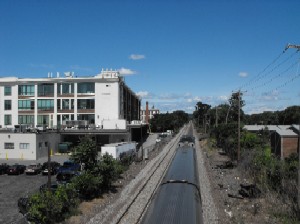



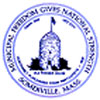
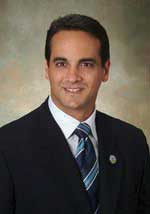



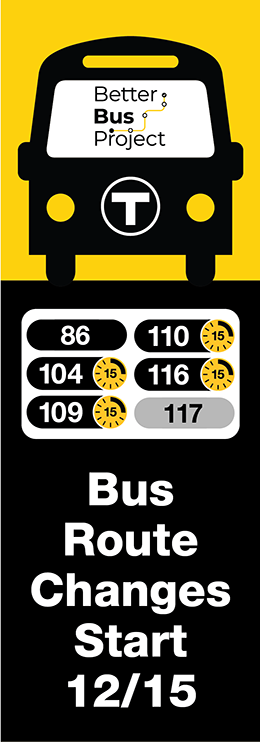







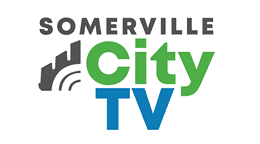



Reader Comments